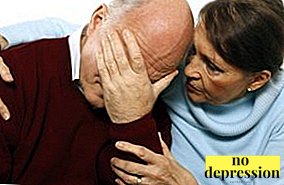In the course of his life, a person constantly enters social groups.
Exist various types of such associations.
Definition

Social group - a collection of people who are united by common features, attitudes or interests.
All human life - being in groups.
In each he performs a specific role.
Signs and structure
Signs of a similar community:
- internal organization;
- common goal;
- control system;
- behavior patterns;
- intensive interaction between representatives;
- sense of belonging, involvement in community activities;
- consideration of each other's interests;
- participants have certain expectations.
A social group, like any other aggregate of people, has a certain structure.
A stable organizational community system allows you to maintain its effective functioning, to ensure the satisfaction of the interests of all participants.
Main structural elements: core and periphery. Core - This is the central part, which consists of key representatives.

They determine the direction of activities, development paths and the existing order within the association.
The core is stable and consistent; its organizers rarely leave their leading positions and move to the periphery level.
It is thanks to this stability of the core and maintaining the stability of the existence of a community.
The representatives of the nucleus have the integrity of their views and interests, they have common convictions.
The emergence of disagreements between them and the destruction of the nucleus leads to automatic destruction of the group, if among the representatives of the periphery there are no persons capable of forming a new stable core.
Periphery - This is a less significant part of the structure, which consists of individuals who are indirectly involved in the process to varying degrees. The further away from the core, the less the degree of human involvement.
During the existence of a community, people from the periphery constantly migrate from one position to another or completely leave the community.
Migration occurs due to changes in initial characteristics (age, education, profession, achievements, etc.) or due to social mobility.
Classification

There are various theories of classification of social groups.
The basic principle of their separation is based on an assessment of the magnitude of the community and suggests the existence of two main types:
- large;
- small.
By level of internal interaction The following division applies:
- primary (contact);
- secondary (remote).
Primary Groups - associations of people who enter into direct interpersonal communication, are in close relationships. These are associations of friends, relatives, colleagues.
Secondary imply a more formal communication - these are relations based on legal, contractual obligations. Here, participants never interact with each other on an emotional level, but communicate exclusively in a businesslike way.
Small
This is a small community of people entering communication. Between participants exist emotional connections, and their interaction is governed by general rules, principles.
Kinds

Classification:
- by way of education: spontaneous, organized;
- by the presence of connections: real, conditional;
- by social status: official, unofficial;
- in terms of development: low, high;
- by personal significance: reference, membership groups;
- by social significance: positive, asocial, antisocial.
Examples
The classic example is family. This is not only a family consisting of parents and children, but also the entire aggregate of relatives, united by ties of kinship, marriage, and emotional attachments.
The criterion of a person’s belonging to a family is his participation in interpersonal interaction with other relatives.
The core of this community is made up of relatives who have the main authority among the majority and make key decisions. Such people in the family communicate with all its representatives, are always up to date and can affect their further development.
AT periphery includes people who are less involved in interpersonal relationships between members of this community and have a lesser degree of awareness.

Family can be classified by the above criteria.
For example, legally married spouses by public status are official group.
If a man and a woman consider themselves to be family, but are not married, their union is unofficial.
A family in which all are successfully socialized in society is socially significant. positive. If there is a destructive behavior (alcoholism of parents, illegal behavior of children, etc.), then the family becomes asocial.
Another classic example is friends. Under friendship refers to the close interpersonal interaction of individuals interested in each other.
A small group may consist of two friends, or it may be represented by a company of friends. The core of the community will be the individuals who have the greatest authority among all the participants.
In the process of the existence of friendships due to changes in the social and personal characteristics of friends, their role may change. Also, the loss of one of the participants of the desire to continue communication can lead to their departure.
Large
This is a collection of people who are part of society. These include: classes, nations, ethnic groups, meetings, rallies, etc. The general classification allows to distinguish the following types:
- for the duration of existence: sustainable; temporary;
- according to the level of organization: organized, spontaneous;
- by the level of interaction: conditional (age, professional), real (meetings, rallies);
- openness: open, closed.

Two similar communities occupy a special historical place - this ethnic groups and classes. Ethnic groups share a common culture, common language, behavioral features, awareness of their differences from other ethnic groups.
Classes are sets of people who occupy a special place in society, possess an appropriate level of social benefits.
Psychology
The vital activity of such associations is based on common goals, traditions, views. A large group of people has a single psychology that defines the system of ideals, values, and emotional preferences.
Similar psychology leaves a print for each specific person. Therefore, there are concepts of a typical representative of any class, ethnic group, etc. All people become carriers of those views and stereotypes of thinking that are accepted in their union.
Public opinion It consists of those attitudes and principles that are broadcast by representatives of various large groups.
Phenomena

Many scientists at different times noted the importance of large social groups, their able to affect the stability of society and change the course of events.
Among all kinds, the crowd has a special power.
Crowd phenomenon lies in the fact that with absolute unsystematicity and lack of organization, it can become a driving force that changes the social structure of society.
The crowd is usually meant spontaneous gathering of peoplewhich has the following features:
- large numbers (in small groups there can be no phenomenon of social impact on public life);
- contact (people in the crowd stand in close proximity to each other);
- agitation (people from the crowd are in an emotionally excited state, do not fully control their behavior, under the influence of universal unity are prone to impulsive and irresponsible actions);
- disorganization (the spontaneous nature of the emergence of the association and the emotional agitation of its participants prevent the development of a clear strategy for action)
- aimlessness (despite the common reason that motivates people to act, each of them pursues his own individual goals).
Another phenomenon - reference group (maybe not only big, but also small). It does not have, as a crowd, a large-scale impact on the social order, but it can have a significant impact on the life of a particular individual.
It is a real or imaginary collection of individuals, which is benchmark. He dreams of becoming part of this community, if he is not yet in it. As a result, the existence of such a standard motivates a person to achieve the necessary results, to work on himself.

If he is already a member of the reference group, then its members for him become authorities, which he focuses on in life.
For a child, his family acquires such importance, for teenagers - a company of peers popular in school, for an adult person - a colleague who has achieved professional success, etc.
Socio-psychological climate
The concept of socio-psychological climate in the group includes an assessment of the following criteria:
- set of socio-psychological characteristics;
- the emotional mood prevailing in the community;
- the nature of the relationship.
With favorable climate all participants feel positive, have feelings of security, joy, trust, sympathy. All communications are based on the principles of mutual respect, openness and involvement in the common cause.
Everyone gets opportunities for personal or professional growth (depending on the type of group), has the right to take the initiative and make decisions. Possible mistakes do not entail the fear of punishment or conviction.
AT adverse climate in the first place such sensations as pessimism, tension, insecurity, fear, suspicion. Community members have no trust or sympathy for each other.
The lack of a positive attitude leads to unwillingness to put joint efforts to achieve the objectives, and this, in turn, leads to a general dissatisfaction.
Learning problems

The group problem takes key place in social psychologySince social psychology deals with the study of the peculiarities of people's behavior precisely when they are involved in social groups, as well as the study of the key characteristics of the groups themselves.
In social psychology, the following questions are to be studied:
- understanding between people;
- relationship formation;
- social attitudes;
- obedience to social norms;
- large group phenomena;
- psychological phenomena, processes (public opinion, mass consciousness, rumors, religion, etc.);
- the degree of mutual influence of the individual and group;
- intergroup relationships;
- leadership.
Group behavior
To preserve the unity of the community, representatives of its core adhere to certain management principles. These principles must be respected by all participants.
In a situation where one person violates the rules established for all, the majority has the right to apply to him impact measures. Such measures are called social sanctions.
An individual who has committed an inappropriate act, under the influence of sanctions, must correct his behavior. Otherwise, it may be excluded from the group.
Thus, social groups are an integral part of the life of the individual. Each person is in many small and large associations that have a certain impact on him.
Concept and types of social groups:



